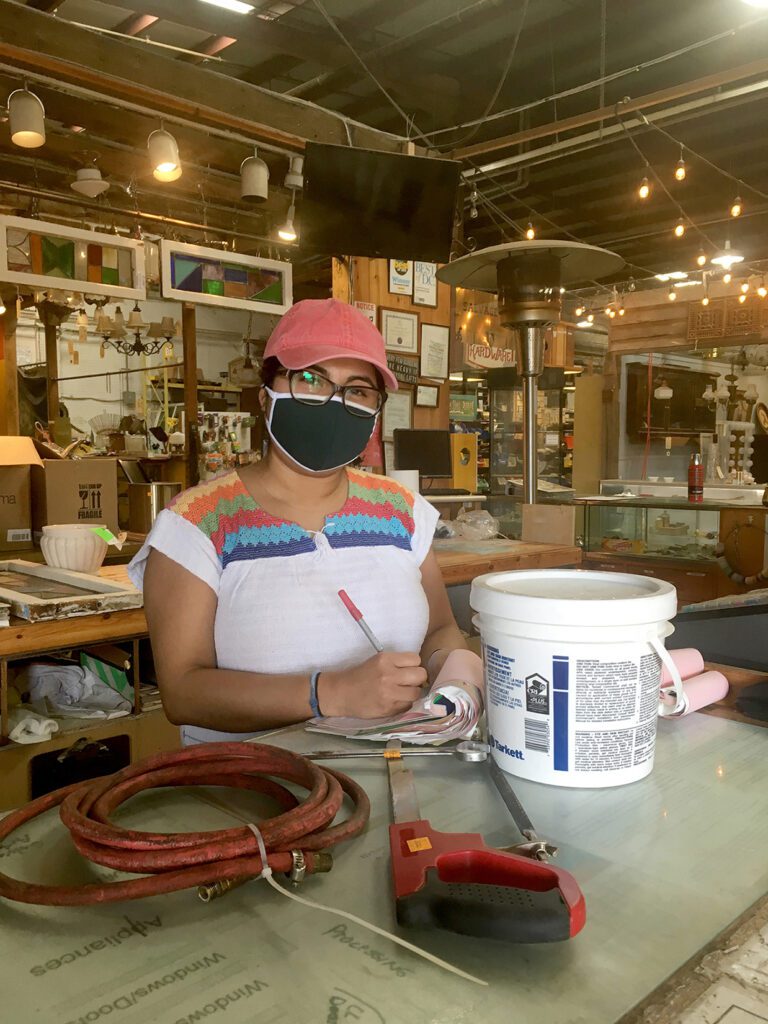Community Forklift: Reusing Building Materials to Improve Homes, Protect Environment
By • April 20, 2023 0 1636

In honor of Earth Day, we spoke with Trey Davis, executive director of Community Forklift, a non-profit reuse center for home improvement supplies located just outside the District in Edmonston, Maryland.

Community Forklift’s reuse warehouse is located at 4671 Tanglewood Dr. in Edmonston, Maryland, about 5 minutes outside of Washington, D.C. The warehouse is open to the public every day. Photo courtesy of Community Forklift.
GEORGETOWN MEDIA GROUP: Tell us more about Community Forklift. We noticed you’re a non-profit.
TREY DAVIS: Yes! Community Forklift is the D.C.-area’s hometown non-profit reuse center for home improvement supplies. We collect donations of building materials and home furnishings and décor and make them available to the community at low cost. We also distribute free supplies to non-profits and neighbors in need and offer public education and events centered on reuse. Community Forklift’s name comes from its mission: we lift up local communities by making repairs affordable, reducing waste, promoting reuse, and creating green jobs.
GMG: How are you helping the environment, making supplies more affordable and building the economy?
TD: At our 40,000-square-foot reuse warehouse in Edmonston, Maryland, we collect donations of surplus and salvaged residential building materials, new and vintage household goods, tools, hardware, furnishings, and more. Diverting these materials from local landfills reduces greenhouse gas emissions and conserves natural resources.
We offer salvaged and surplus materials to the public at below-market prices, and we serve over 72,000 customers each year, including do-it-yourselfers, contractors, repair people, and artists. We’ve also donated over one million dollars in free materials to community groups and households with limited resources. We’ve collaborated with hundreds of community organizations, housing nonprofits, schools, gardens, theaters, faith-based groups, and volunteers to provide materials for community projects.
In the process, we’ve created green jobs with great benefits for over 30 people, generated tax deductions and reduced disposal costs for building and supply companies and homeowners, and supplied small businesses and local tradespeople with inexpensive materials for their work.
GMG: Tell us more about construction waste and why it’s such a big issue today.
TD: More than 600 million tons of construction waste goes into landfills in the U.S. annually. Construction debris represents 30 to 40 percent of the entire waste stream. As new homes are built and existing structures are updated, renovated, or demolished, usable cabinets, bathroom fixtures, appliances, lighting, furniture, and other materials are trashed to make way for the new. For homeowners, builders, suppliers, and retailers, tossing this stuff out is often the fastest and easiest way to get rid of it. Unfortunately, that also means throwing away the raw materials and energy that went into producing and transporting those items. Each item that can be diverted from the waste stream and reused reduces the need to use additional materials and energy to create something new.
GMG: What are three things you’re most proud of accomplishing since you started?
TD: I’m proud of the team we have working here at the reuse warehouse. They’re friendly, knowledgeable, and dedicated to our mission, and they work hard to serve the community and keep everything running smoothly.
I’m proud of the efforts we’re undertaking to modernize our systems. These improvements will enable us to process items more efficiently and move more material through the warehouse. That translates directly into making more materials available to customers and keeping it out of local landfills. Because Community Forklift is largely self-funded, increased sales will also mean we can continue to provide good jobs to people in the area.
I am proud that we can reach and engage with people outside of our reuse warehouse. We have really grown our online community through posting customer projects for reuse inspiration, sharing the history behind some of our unique items, and sharing stories from our community giving programs. You can find us on Instagram, Facebook and Twitter. We also list some of the items from our reuse warehouse for sale online in a Community Forklift Marketplace, which now serves as kind of a catalogue of available salvaged items.
GMG: How can Washingtonians get involved?
TD: Washingtonians can get involved in our mission by donating reusable materials at our warehouse or scheduling a donation pickup, donating funds to support our operation expenses, and purchasing salvaged materials from our warehouse for their own projects. Our reuse warehouse is open to the public every day (except Thanksgiving, Christmas, and New Year’s Day) from 12 to 5 p.m. More info can be found at Community Forklift.org.
Community Forklift’s reuse warehouse is located at 4671 Tanglewood Dr. in Edmonston, Maryland, about 5 minutes outside of Washington, D.C.

